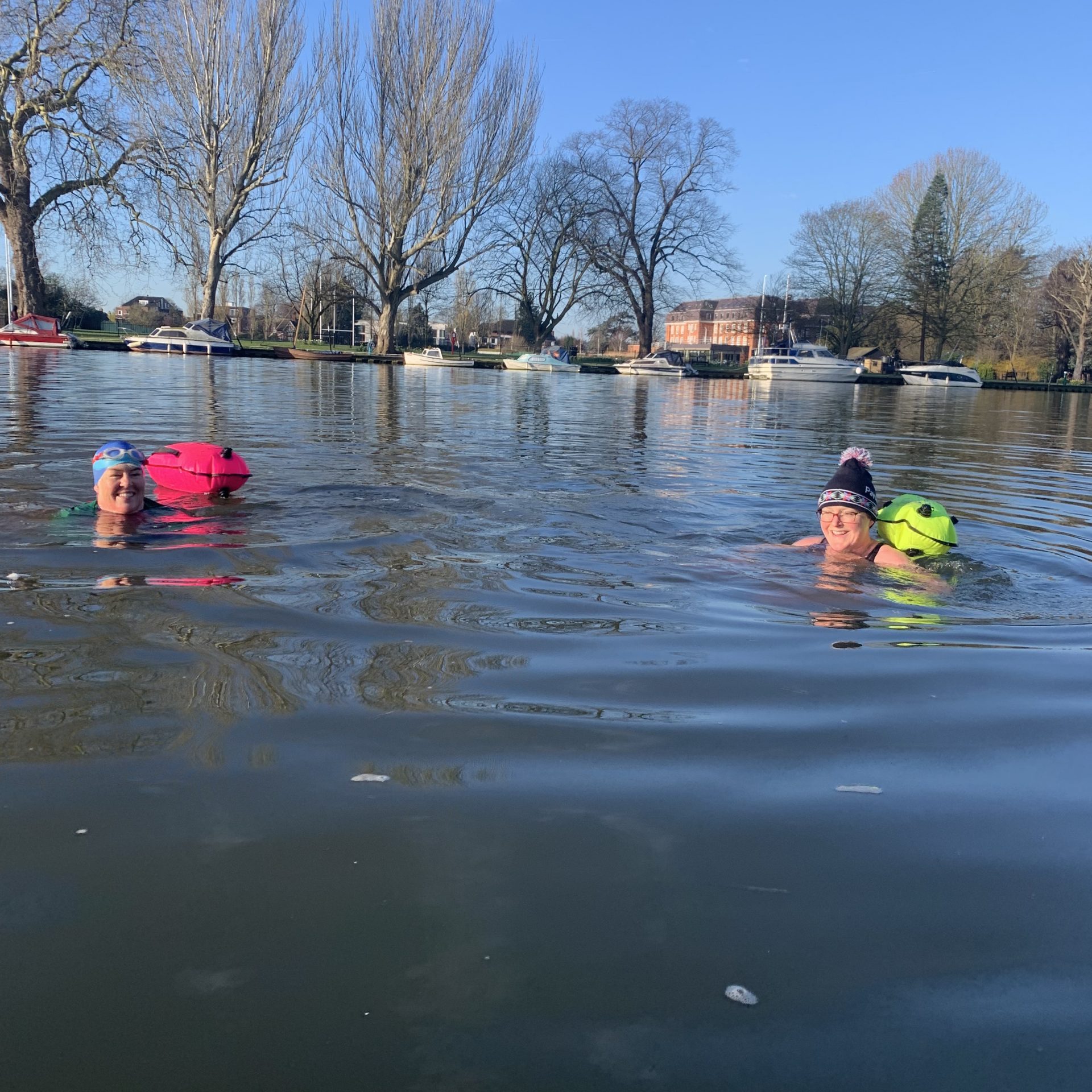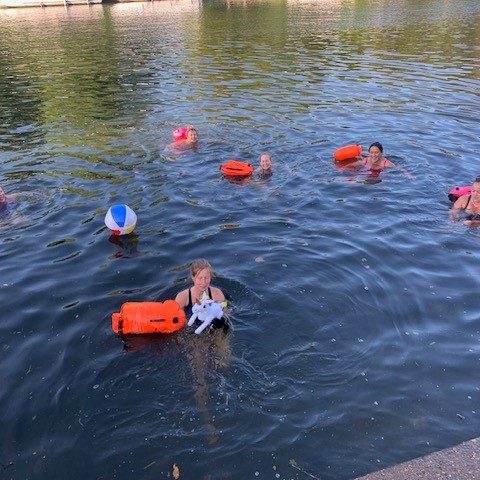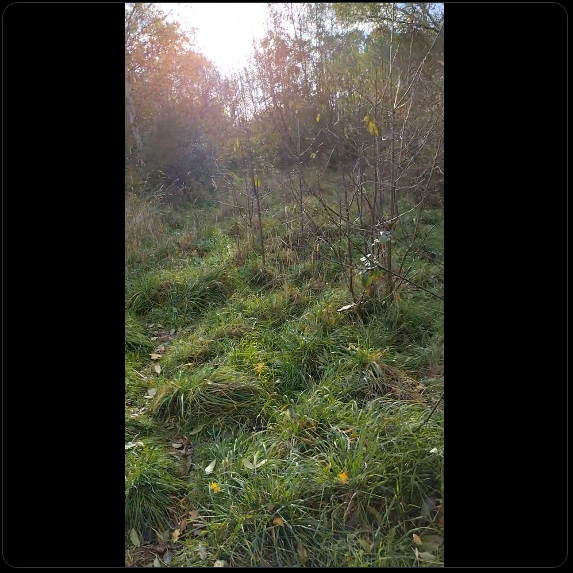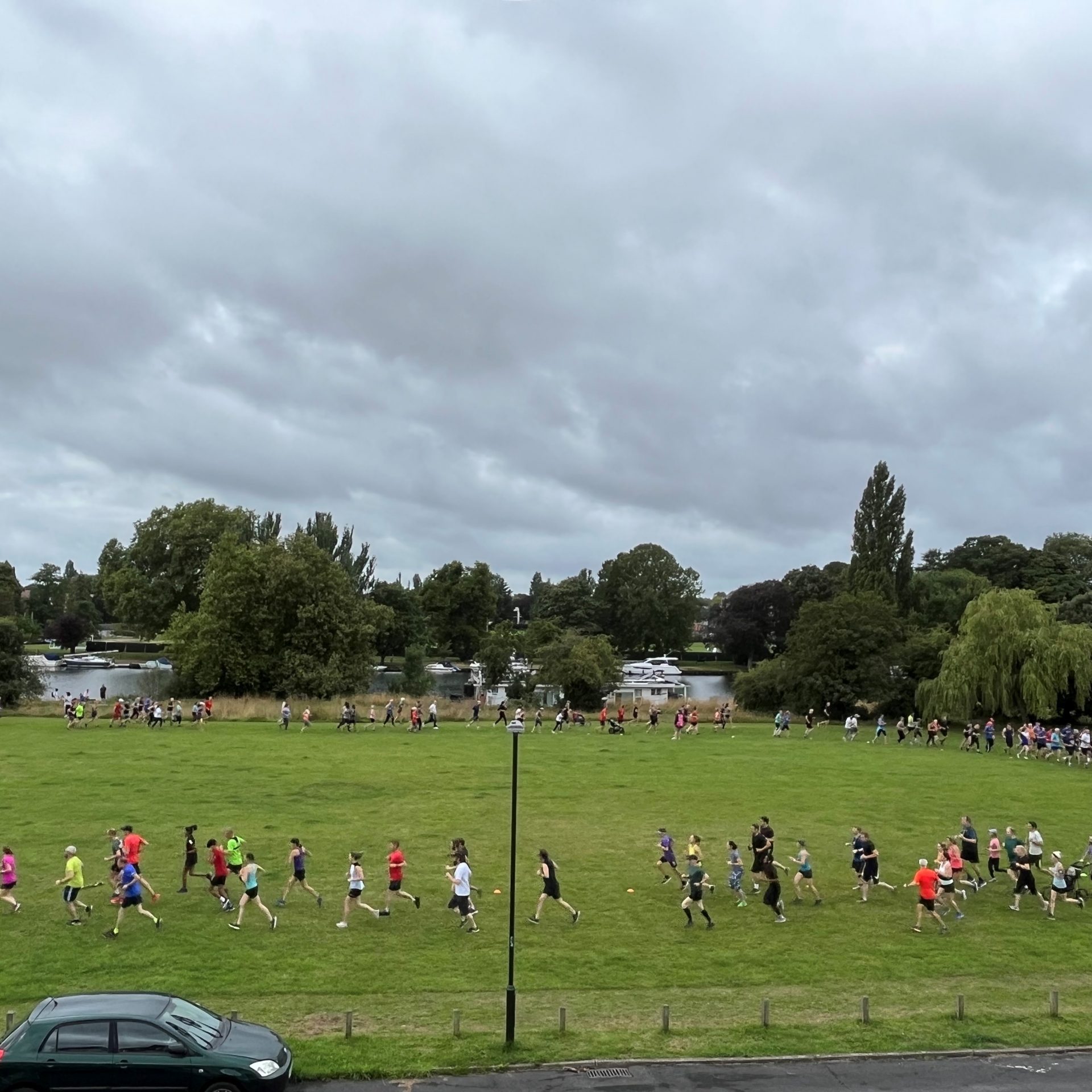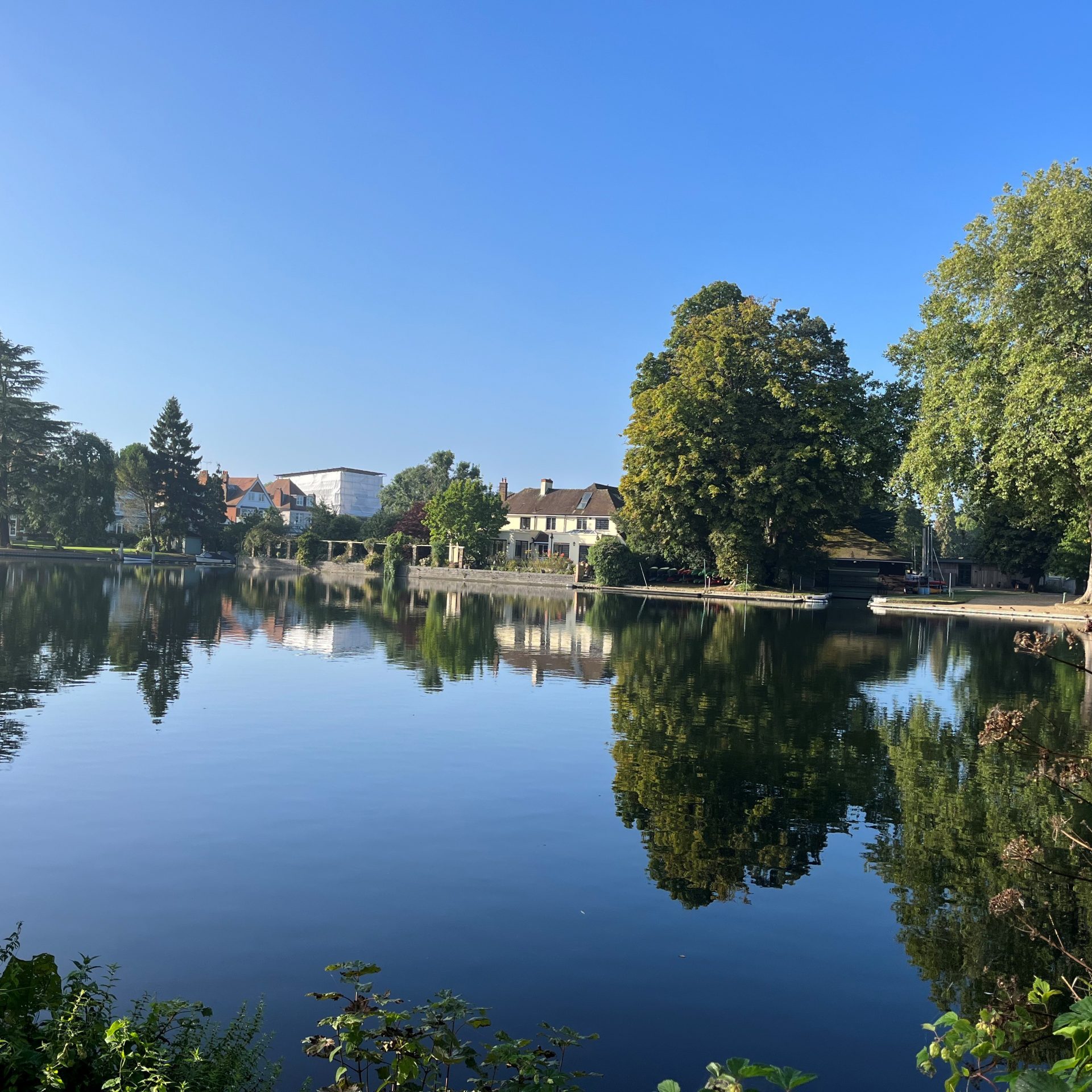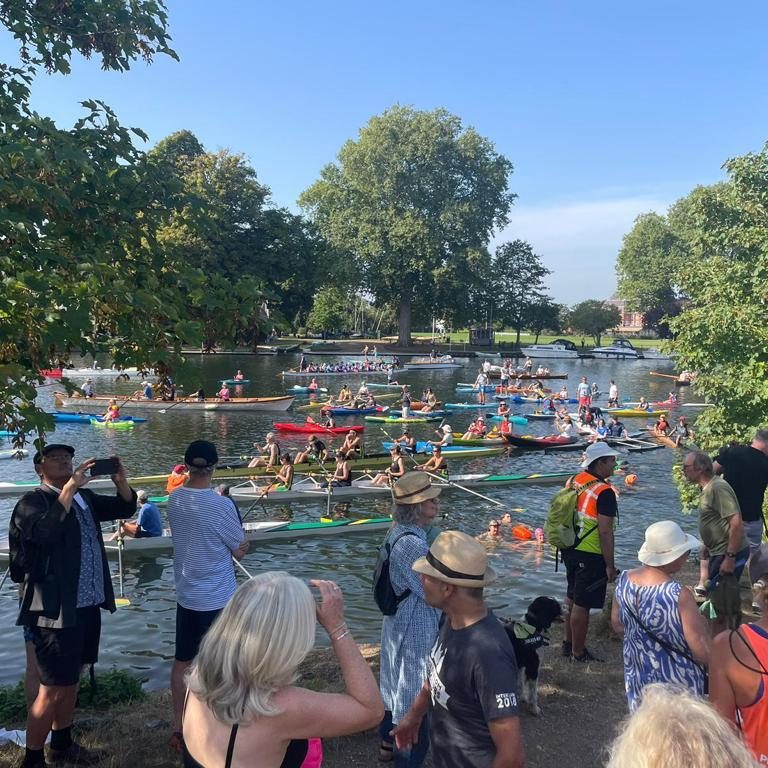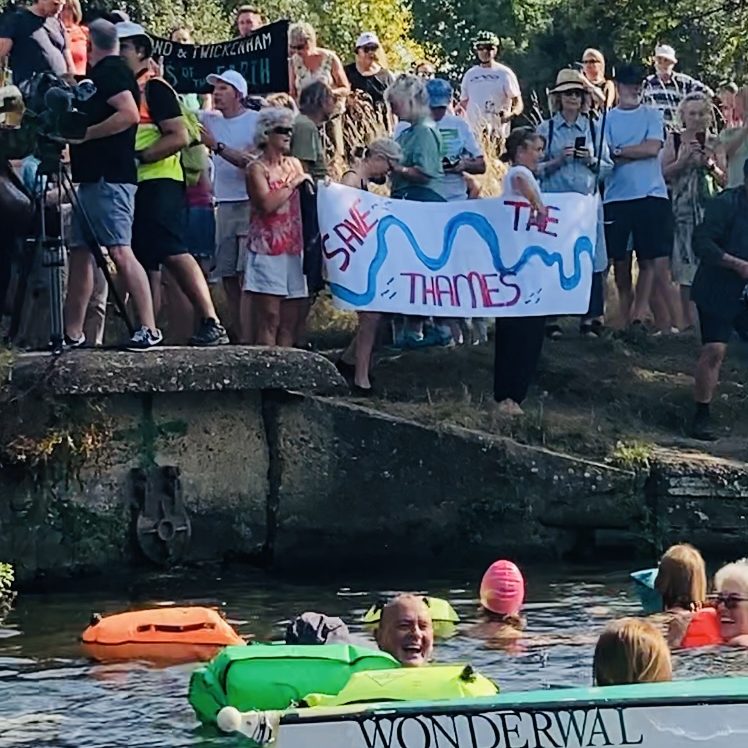Why we object to Thames Water's TDRA
This campaign opposes Thames Water's TDRA scheme on environmental and social grounds. We believe that there are better and more sustainable solutions that should be given priority over TDRA.
The TDRA scheme is environmentally flawed
There will be long-term environmental and ecological impacts on the River Thames water quality. There will be damage to the green spaces utilised in construction. There will be a negative change in the character of the "Arcadian Thames", an iconic and historic riverside area of the Thames around Teddington Weir.
- The plan will abstract (remove) water from the River Thames and replace it with treated effluent sewage at a unique location where the tidal river meets the freshwater river.
- There will be a significant impact to water quality from putting treated sewage into the River Thames. See details below.
Green spaces are protected for a reason: for the protection of nature and for the benefits that access to nature can have on human health. - Trees will be chopped down, Bat roosts and badger setts will be disturbed
- Building compounds will cause earth compaction and change the soil biome
- Building compounds will interfere with the natural movement of mammals and birds which may damage their ability to flourish.
- There will be air quality consequences from the significant increase in construction around Mogden arising from the change in tunnelling method.
"In addition to the potential traffic impact, it is likely the TDRA would have a substantial negative impact onthe ecology of the Metropolitan Site of Special Interest for Nature Conservation that comprises Ham Lands. While I can acknowledge Thames Water’s stated commitment to biodiversity net gain and reconstruction, this does not discount the immediate impact the temporary destruction of acres of nature reserve would have on local flora and fauna. Once mature trees are felled, they cannot be replanted, and once badger setts are destroyed, and their occupants killed or driven off, they cannot necessarily be restored. These are two specific examples of the damage this project could do to the area, but Thames Water’s own documentation cites a potential impact on a wide array of wildlife."
Sarah Olney, MP for Richmond Park. Letter to Constituents, November 2023,.
The TDRA scheme is socially flawed
To construct the tunnels, shaft, abstraction and outfall sites, Thames Water will be removing land from community use for a significant period of time, causing a high social cost.
Specifically in Ham Lands and Burnell Open Space:
- Point 1 The Richmond / North Kingston construction areas include tunnel shafts, the outfall structure, the abstraction structures and the connection shaft to the TLT tunnel.
- Point 2 Ham street car park / Ham Playing fields will see the construction of a 10.5 metre shaft at a constricted road junction which many people use to access the riverside. Construction of a shaft may take up to 8 months.
- Point 3 Burnell Open space at the south of the scheme will be hoarded off for construction of the outfall structure, abstraction structure, as well as several ancillary kiosks. This could be for up to 21 months.
- Point 4 There are several primary and secondary schools within the area of construction; students, workers and thousands of residents will be impacted by construction traffic and restricted access to the riverside.
- Every day, there will also be a huge impact on the thousands of walkers, runners, casual river users and swimmers that use the Burnell Open space and the Thames Path National Trail towpath
Throughout residential neighbourhoods:
- Construction will take place on roads that were never built for, and cannot sustain, continuous heavy construction traffic of the kind TDRA will require. Some of the roads in Ham Lands can barely accommodate two cars at the same time.
- There will be issues of noise, air quality, building vibration, nighttime working, and construction traffic.
- The densely built areas of Isleworth will suffer from a large amount of HGVs and other construction traffic around the area needed to build the new treatment facility at Mogden. Added to this will be the “significant” increase in HGV traffic needed to remove tunnel spoil from the tunnel construction on the west side of the sewage works.
- The tunnels will be going under conservation areas with buildings that are already subject to subsidence. Many people in the areas of the conveyance route and the construction are very concerned about the impact of tunnelling under their houses and the sheer amount of construction traffic. These issues need to be addressed by Thames Water. There was no information for residents at the information events, despite Thames Water referring concerned residents to attend those meetings to get their questions answered.
Thames Water cannot be trusted
Thames Water claims the TDRA proposal will be safe, as they are regulated and are required to adhere to regulations dictated by the Environment Authority and other bodies.
However, campaigners are concerned that these regulations are insufficient to protect the river. And, further, that although fines may be imposed for breaches, this is not enough to protect our river.
Thames Water has indicated they do not plan to make the river worse with this scheme
"We’re committed to ensuring that water quality of the River Thames is not deteriorated as a result of the Project."
Thames Water, p.10 Teddington Direct River Abstraction and Water Recycling Project, October - December 2023.
But, Thames Water's record is poor
Thames Water has repeatedly put profits and shareholders ahead of customers and the environment.
Prosecutions of Thames Water by the Environment Agency for pollution incidents have now led to fines of £35.7m between 2017 and 2023.
- Rivers polluted by "reckless" Thames Water (Environment Agency)
Judge - Thames Water "deliberately misled" the Environment Agency in and around pollution of rivers in Sussex and Surrey in which several thousand fish died. - Water companies given £114m performance fine – with Thames Water amongst the worst of the lot. (CityAm, September, 2023)
- Thames Water hit with £73m penalty over pollution and leakages (CityAM, November 2023
- Struggling Thames Water fined $4 million by UK court (Reuters, July 2023)
- Sewage in kitchens and ‘white elephant’ projects: why Thames Water is struggling (The Guardian, June 2023)
"Whilst there is undoubtedly a need to future-proof our water supply, there is a fundamental issue around trust. Thames Water has a terrible record — regularly spilling raw sewage into our rivers and losing a quarter of its water supply every day due to leaks — whilst rewarding its executives with sky-high bonuses."
Munira Wilson, MP for Twickenham. Letter to Constituents, November 2023,.
Water and sewerage companies in England: Environment Agency's environmental performance report 2022
In this summary report on the environmental performance of the nine water and sewerage companies operating in England from the Environment Agency, Thames Water was given a two-star rating.
Further, in reporting the total number of water pollution incidents, the EA reported that Thames Water performed "significantly below target (red)" for the EPA metric that assesses the total number of water quality pollution incidents from sewerage assets.
Ham Lands from Maddy Shah Scott on Vimeo.
A film about Ham Lands
This video was created by local Kingston resident Maddy, a final-year student at Manchester University. She created this video as part of her university work. Her focus was to showcase the biodiversity and importance of Ham Lands and how destructive the Thames Water Teddington River Abstraction Scheme would be.
Learn how Ham Lands was created — on gravel pits filled with topsoil (and seeds) from all over London — and why it matters to save the area from any disruption.
The impact of putting treated sewage into the River Thames
Impact on plant life of treated sewage in river water
The Environment Agency has enforced 'nutrient neutrality' for the effluent outfall. These nutrients consist mainly of Nitrogen and Phosphorus, well known to gardeners as they're added to commercial compost and fertilisers in specific amounts to promote plant growth.
The undiluted presence of these in raw sewage damages aquatic plants, causing some species to thrive and become invasive and others to die, compounding the wider river ecosystem.
This is why the Environment Agency is requiring Thames Water to filter out these nutrients to appropriate levels. This is also why Thames Water is saying the effluent outfall ‘will not make the river any more polluted.'
Impact of chemicals in treated sewage in river water
Currently, the Environment Agency does not regulate chemicals that Thames Water is not filtering from the treated sewage going back into the water.
Thames Water has confirmed they will not be removing pharmaceuticals such as hormones, painkillers and antibiotics. They will also not be removing microplastics or emerging contaminants (also known as forever chemicals) like PFAs and PFOs. These are suspected as carcinogenic and derived from cleaning products and the manufacturing industry.
Risk of faecal contamination by putting treated sewage in river water
Currently, Thames Water is not obliged or planning to reduce the presence of bacteria, viruses and parasites from the effluent, which would include faecal contaminants such as E. coli, salmonella and coronavirus. A decision will be made in 2025 as to whether these will be reduced.
The concentration of all these contaminants when the effluent outfall is flowing at 75 million litres a day will be greatly concentrated because the abstraction plant will be removing 75 million litres of fresh river water a day and the river will be at its lowest due to drought. At this time river users will be at their peak, especially children.
Swimmers at the proposed outfall location are already suffering the effects of microbiological pollution from raw sewage spills. The effects of emerging contaminants on human and aquatic life are more unknown, though we will be producing a report compiling existing research on this to present to Thames Water in due course.
Thermal load and salinity impacted by putting sewage in river water
The natural water temperature of a river is increased when treated effluent is added. Treated effluent is warmer than river water.
The salinity (salt content) is also increased when treated effluent is added.
Increasing the temperature reduces dissolved oxygen and increases the metabolism of cool- and cold-water fish, causing them to burn energy at a faster rate and result in death when river temperature exceeds their physiological limits.
Salinity plays an important role too as it impacts growth rates and metabolism. For some fish higher salinity is beneficial but for others, it’s incredibly detrimental.
Link to a video walkthrough on Facebook of the areas that will be impacted by the TDRA on Burnell Open Space and Park Gate Woods. (Video courtesy of B O'Dea.)
Link to a video walkthrough on X / Twitter of the areas impacted by the TDRA on Park Gate Woods. (Video courtesy B O'Dea.)

Proposed outfall site near Burnell Open Space
Park runners in Burnell Open Space. Every weekend, around 350 Park Run participants join a 5K Park Run starting on Burnell Avenue and continue towards Teddington Lock along the tow path, returning back along the river and finishing at the YMCA Hawker Center. Under new TDRA plans this run would become impossible.
